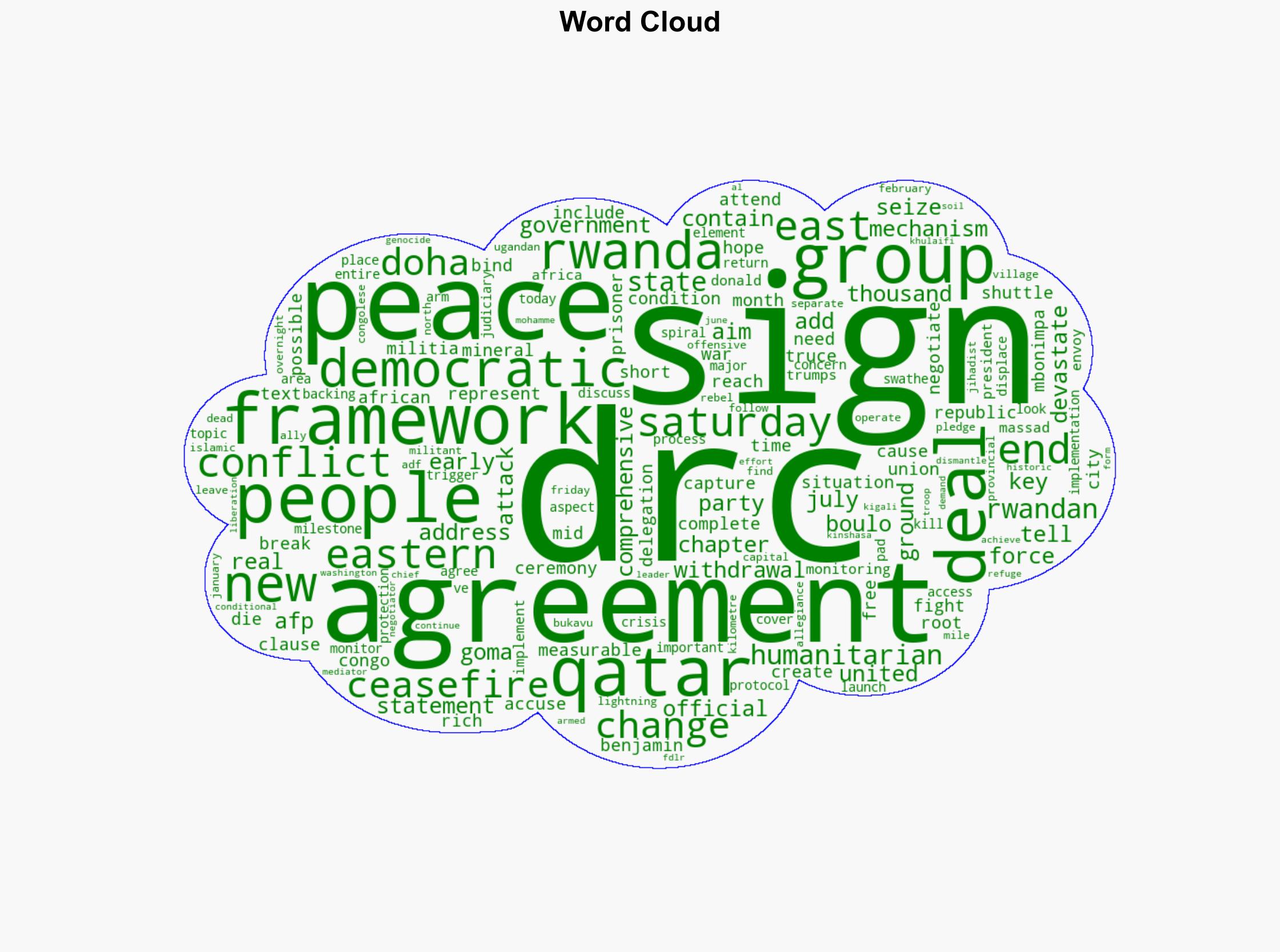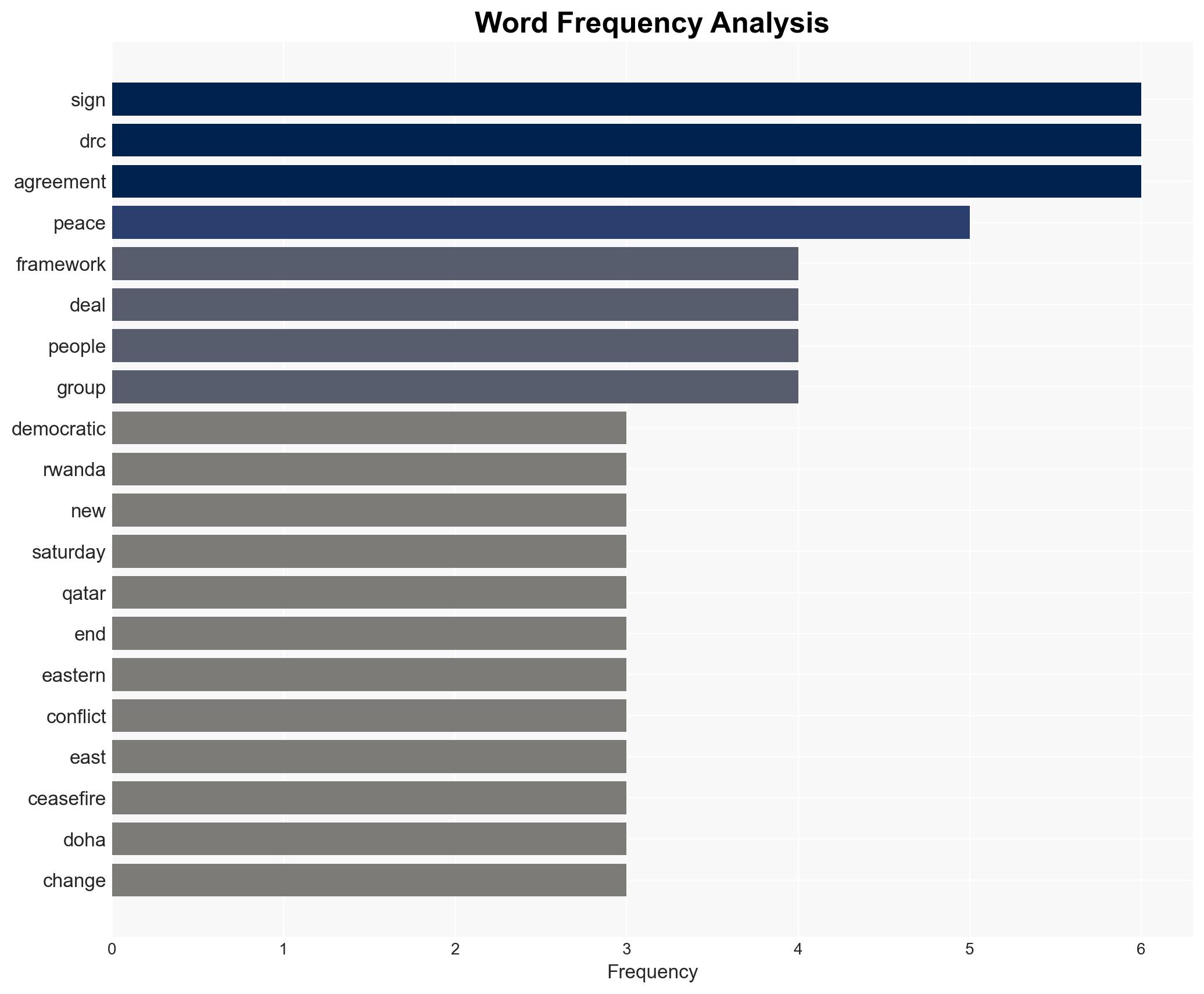M23 DR Congo sign new peace roadmap in Doha – Digital Journal
Published on: 2025-11-15
AI-powered OSINT brief from verified open sources. Automated NLP signal extraction with human verification. See our Methodology and Why WorldWideWatchers.
Intelligence Report:
1. BLUF (Bottom Line Up Front)
The recent peace roadmap signed in Doha between the Democratic Republic of Congo (DRC) and Rwanda-backed militia, M23, represents a significant diplomatic effort to stabilize the eastern DRC. However, the success of this agreement is contingent upon effective implementation and genuine commitment from all parties involved. The most supported hypothesis is that while the agreement may lead to a temporary reduction in hostilities, long-term peace is unlikely without addressing underlying issues such as political grievances and economic incentives for conflict. Confidence Level: Moderate.
2. Competing Hypotheses
Hypothesis 1: The Doha peace agreement will lead to a sustained reduction in conflict in the eastern DRC due to effective implementation and monitoring mechanisms.
Hypothesis 2: The agreement will only result in a temporary cessation of hostilities, as underlying issues such as political grievances, economic interests, and external influences remain unaddressed.
Hypothesis 2 is more likely due to historical patterns of ceasefire violations and the complexity of the conflict, which involves multiple actors with divergent interests.
3. Key Assumptions and Red Flags
Assumptions: It is assumed that all parties are genuinely committed to peace and that monitoring mechanisms will be effectively implemented.
Red Flags: Previous agreements have been violated, and the involvement of external actors such as Rwanda complicates the situation. The presence of armed groups with economic incentives to continue conflict is a significant risk.
Deception Indicators: Public statements of commitment to peace without corresponding actions on the ground may indicate insincerity.
4. Implications and Strategic Risks
The failure of the peace agreement could lead to renewed violence, exacerbating the humanitarian crisis and destabilizing the region further. Political instability in the DRC could spill over into neighboring countries, potentially drawing in more regional actors. Economic interests in the mineral-rich region may fuel continued conflict, undermining peace efforts.
5. Recommendations and Outlook
- Monitor implementation closely and hold parties accountable for violations.
- Engage regional and international stakeholders to address underlying issues, including economic incentives for conflict.
- Best Scenario: Successful implementation leading to long-term peace and stability.
- Worst Scenario: Collapse of the agreement, leading to intensified conflict and regional instability.
- Most-likely Scenario: Temporary reduction in hostilities with potential for renewed conflict if underlying issues are not addressed.
6. Key Individuals and Entities
Benjamin Mbonimpa, Massad Boulos, Mohammed Al Khulaifi.
7. Thematic Tags
Structured Analytic Techniques Applied
- Cognitive Bias Stress Test: Expose and correct potential biases in assessments through red-teaming and structured challenge.
- Bayesian Scenario Modeling: Use probabilistic forecasting for conflict trajectories or escalation likelihood.
- Network Influence Mapping: Map relationships between state and non-state actors for impact estimation.
Explore more:
National Security Threats Briefs ·
Daily Summary ·
Support us
·





